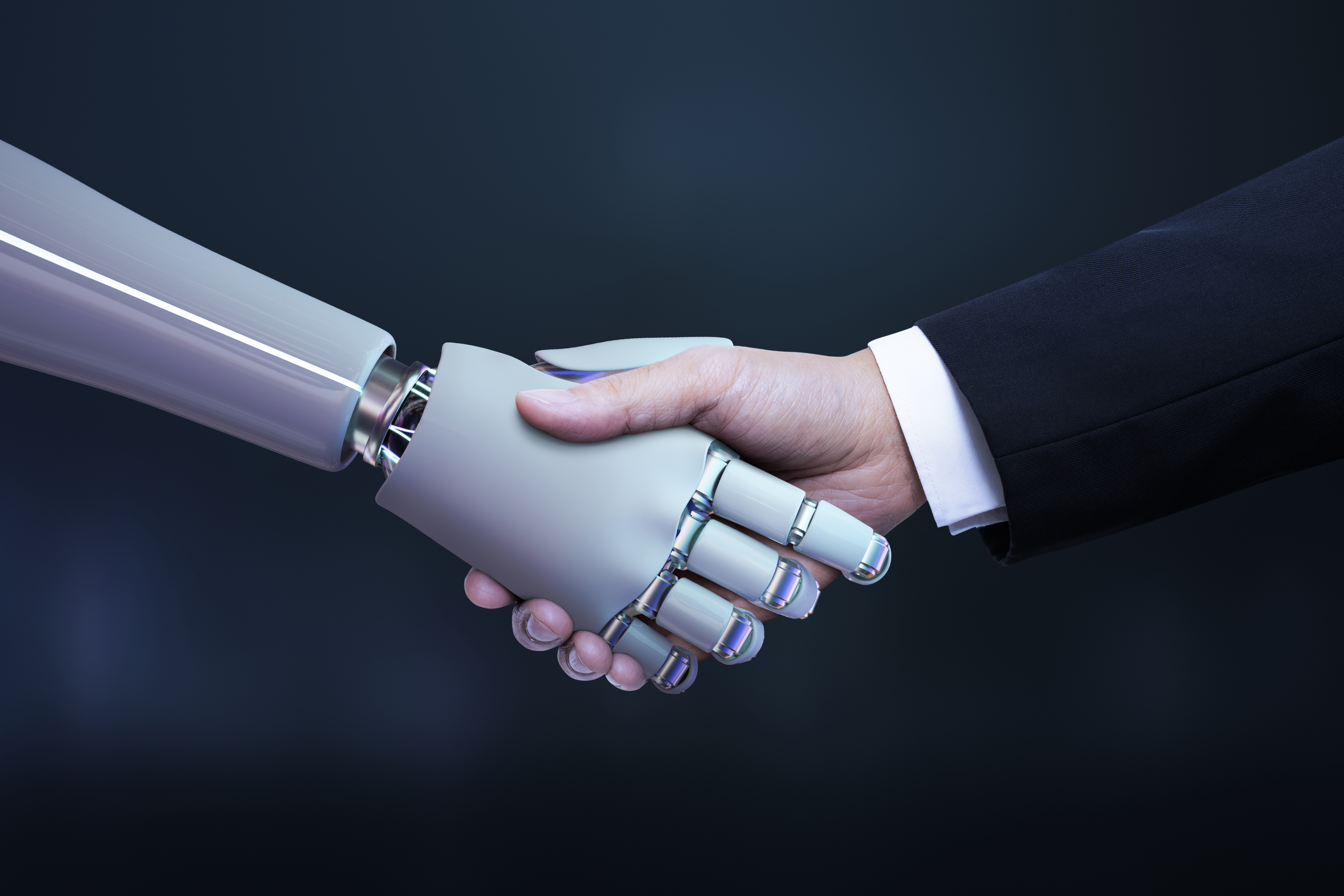Boost Your Customer Service Game with ChatGPT: Unleash the Power of AI!
Customer service is the lifeblood of any business, and it's essential to get it right. However, providing excellent customer service can be a significant challenge, particularly when dealing with a high volume of inquiries and requests. This is where ChatGPT comes in.
ChatGPT is an artificial intelligence (AI) chatbot that can help you improve your customer service operations in many ways. For example, it can provide instant responses to customer inquiries, offer 24/7 availability, personalise interactions, and even automate some of the more routine and repetitive tasks.
One of the key benefits of ChatGPT is its ability to improve response time. With traditional customer service methods, customers may have to wait hours, if not days, to receive a response. This can be frustrating and can lead to a negative perception of your brand. However, with ChatGPT, customers can receive an immediate response, which can help improve customer satisfaction and loyalty.
Moreover, ChatGPT can provide 24/7 availability, even outside of business hours. This means that customers can receive help and support at any time of the day, which can help you stay ahead of your competitors and provide your customers with a better experience.
Personalisation is another area where ChatGPT can make a difference. ChatGPT can be programmed to personalise customer interactions and tailor responses to their specific needs, making them feel valued and heard. For example, it can remember previous interactions with a customer and provide a more personalised response based on that information.
ChatGPT can also help you save on costs by automating some of the more routine and repetitive customer service tasks. This can free up your staff to focus on more complex issues, leading to improved efficiency and reduced costs.
Furthermore, ChatGPT can help increase customer satisfaction. With improved response time, personalised interactions, and 24/7 availability, customers are likely to be more satisfied with your customer service, leading to increased loyalty and retention. In fact, a study conducted by Oracle found that 80% of businesses plan to use chatbots for customer service by 2020, and 36% of customers would prefer to use a chatbot for customer service inquiries.
It’s Story Time!
Chatbots have come a long way in recent years, and their use in customer service has seen a significant evolution. From early versions that were clunky and limited to the highly sophisticated and versatile ChatGPT, the journey has been one of rapid growth and change.

The use of chatbots can be traced back to the 1960s, where Joseph Weizenbaum created "ELIZA," one of the first chatbots. ELIZA could simulate a conversation with a human by using pattern recognition and simple language processing. However, it wasn't until the 1990s that chatbots became more widespread, with companies such as AOL and MSN Messenger introducing instant messaging chatbots.
As the internet became more prevalent, businesses began to see the potential of chatbots for customer service. The first chatbots used in customer service were simple and rule-based, responding to specific keywords or phrases. These chatbots were not very effective, and often frustrating to customers due to their limited functionality.
In recent years, advances in natural language processing (NLP) have enabled the creation of more sophisticated chatbots. Chatbots powered by AI technology can now understand natural language, learn from interactions, and even provide personalised responses to customers. One of the most advanced and versatile chatbots is ChatGPT, developed by OpenAI.
ChatGPT is an AI language model that is capable of processing natural language and providing a range of responses based on the context of a customer's query. It uses deep learning techniques to understand human language and provide a more personalised and accurate response.
ChatGPT has quickly become a game-changer in the world of customer service. By providing a more human-like interaction, it can improve the customer experience and provide a more efficient way to handle customer inquiries. ChatGPT can even be used to automate some of the more routine and repetitive tasks, freeing up staff to focus on more complex issues.
The use of chatbots in customer service is rapidly increasing. According to a study by Juniper Research, chatbots will save businesses an estimated $8 billion annually by 2022, up from $20 million in 2017. Furthermore, a survey by HubSpot found that 47% of consumers would be open to purchasing items from a chatbot.
The future of customer service is undoubtedly linked to the continued development of chatbot technology. As ChatGPT and other AI-powered chatbots continue to evolve, their ability to understand and communicate with customers will only improve. This, in turn, will provide businesses with more opportunities to improve their customer service and offer a better overall experience.
So, There Are Benefits…Right?
The use of ChatGPT in customer service operations has become increasingly popular for many businesses. This is due to the numerous advantages and benefits it provides, which can help improve customer satisfaction and streamline business operations.
One of the most significant benefits of ChatGPT is its ability to provide 24/7 availability. Customers can contact businesses at any time of the day or night, and ChatGPT can provide quick and accurate responses. According to a recent survey, 64% of consumers believe that 24/7 availability is the most significant benefit of using chatbots for customer service. This availability can improve customer satisfaction and loyalty, which in turn can lead to increased sales and revenue.
Another advantage of ChatGPT is its ability to handle multiple customer inquiries simultaneously. This can reduce wait times for customers, and increase the efficiency of customer service operations. According to a survey conducted by HubSpot, 71% of consumers are more likely to recommend a business with good customer service, which can lead to increased brand loyalty and customer retention.
ChatGPT can also help businesses reduce costs associated with customer service operations. By automating some of the more routine and repetitive tasks, ChatGPT can free up staff to focus on more complex issues, which can lead to increased productivity and efficiency (remember that Juniper study we mentioned earlier? Yeah, this is in reference to that).
Another advantage of ChatGPT is its ability to provide personalised responses to customers. By using AI technology to understand natural language and learn from interactions, ChatGPT can provide more accurate and relevant responses to customer inquiries. This personalization can help improve the customer experience and increase customer satisfaction. According to a study by Salesforce, 69% of customers prefer chatbots for quick communication with brands.
ChatGPT can also help businesses gather valuable data and insights into customer behaviour and preferences. By analysing customer interactions and feedback, businesses can identify trends and patterns that can be used to improve products, services, and customer service operations. This data can be used to improve marketing efforts and customer retention, which can lead to increased sales and revenue.
Okay…But How?

Implementing ChatGPT in your customer service operations can be a game-changer for your business, but it requires careful planning and execution to ensure its success. Here are the steps that business owners should take when implementing ChatGPT to improve their customer service operations.
Step 1: Define your goals and objectives
The first step in implementing ChatGPT is to define your goals and objectives. What specific problems do you want ChatGPT to solve? Are you looking to improve customer satisfaction, reduce response times, or increase efficiency? Clearly defining your goals and objectives will help you choose the right ChatGPT solution and ensure that your implementation is successful.
Step 2: Choose the right ChatGPT solution
There are many ChatGPT solutions available in the market, and choosing the right one is critical to the success of your implementation. Consider factors such as the cost, ease of integration with your existing systems, and the level of customization available. It's also important to choose a solution that can grow and scale with your business as your needs change.
Step 3: Train your ChatGPT model
Once you have chosen your ChatGPT solution, it's important to train the model to understand your specific business needs and customer interactions. This can be done by providing it with a large amount of training data and fine-tuning the model based on feedback and performance.
Step 4: Integrate ChatGPT into your customer service operations
Integrating ChatGPT into your customer service operations requires careful planning and execution. You will need to decide which channels you want ChatGPT to be available on, such as your website, social media platforms, or messaging apps. It's also important to ensure that your ChatGPT is integrated with your existing customer service systems, such as your CRM or ticketing system.
Step 5: Monitor and evaluate performance
Once ChatGPT is integrated into your customer service operations, it's important to monitor and evaluate its performance. This includes tracking metrics such as response times, customer satisfaction rates, and the volume of interactions handled by ChatGPT. Regularly evaluating and fine-tuning the ChatGPT model based on this data can help improve its performance and ensure its success.
Step 6: Provide human support when needed
While ChatGPT can handle many customer interactions, it's important to provide human support when needed. This includes situations where the ChatGPT is unable to understand a customer's request, or when a customer needs personalised attention. Having a clear escalation process in place can help ensure that your customers receive the support they need.
Implementing ChatGPT to improve your customer service operations can be a powerful tool for your business. By following these steps, you can ensure that your implementation is successful and that ChatGPT is providing value to your customers and your business. Remember, ChatGPT is not a replacement for human support, but rather a valuable addition to your customer service operations.
BEWARE!

Yes, ChatGPT can be a valuable addition to your customer service operations, but it's important to consider several factors before implementing it in your business. Here are some things that business owners should take note of before or when implementing ChatGPT for their company's customer service operations.
Ensure data privacy and security
Data privacy and security are essential considerations when implementing ChatGPT. Ensure that your ChatGPT solution adheres to the necessary data privacy and security regulations and has appropriate safeguards in place to protect customer data. This is particularly important for businesses that handle sensitive information such as financial or healthcare data.
ChatGPT can be a powerful tool for your customer service operations. However, it's important to carefully consider these factors before implementing it to ensure its success and to provide the best experience for your customers. By understanding your customer needs, choosing the right ChatGPT solution, setting clear goals and metrics, training your model, integrating ChatGPT into your existing processes, providing human support when needed, and ensuring data privacy and security, you can implement ChatGPT successfully in your business.
Lack of customer-centric approach
One of the most significant shortcomings in customer service is a lack of customer-centric approach. This means that businesses are more focused on their internal processes, systems and procedures rather than the needs and wants of their customers. When businesses are not customer-centric, it becomes challenging to provide personalised experiences that meet the unique needs of their customers.
For example, a restaurant that prioritises its kitchen efficiency and speed over the quality of the food and the dining experience will likely receive negative reviews from customers who value quality over speed. On the other hand, a restaurant that is customer-centric and values quality over speed will attract loyal customers who appreciate the restaurant's attention to detail.
Poor communication
Another common shortcoming in customer service is poor communication. Businesses that fail to communicate effectively with their customers can create confusion, frustration and ultimately, customer dissatisfaction. Poor communication can occur in many ways, including failing to respond to customer queries, providing ambiguous or inconsistent information, or failing to set realistic expectations.
For example, an e-commerce business that promises next-day delivery but fails to deliver on time or communicate any delays will likely receive negative feedback from customers who were expecting their order to arrive on time.
Lack of consistency
Consistency is another critical element of good customer service. When customers receive inconsistent experiences, it can be challenging to build trust and loyalty. Inconsistency can arise from differences in service quality, response times, or communication across different channels.
For example, a hotel that provides excellent service to its customers during the off-season but fails to maintain the same level of service during peak season will likely receive negative feedback from customers who expected a consistent level of service.
Poor employee training
Another common shortcoming in customer service is poor employee training. Employees who are not adequately trained in customer service can create negative experiences for customers, leading to dissatisfaction and lost business. Poorly trained employees can also make mistakes that can damage the company's reputation.
For example, a retail store with untrained staff who do not know how to handle customer complaints or provide accurate product information will likely receive negative feedback from customers who feel their needs were not met.
Failure to listen to customers
Finally, a significant shortcoming in customer service is the failure to listen to customers. When businesses do not take customer feedback seriously or fail to act on it, it can be challenging to build a loyal customer base. Customers who feel that their feedback is not being heard may take their business elsewhere.
For example, a software company that releases a product with multiple bugs and fails to address customer complaints about the bugs will likely lose customers to competitors who provide better products and respond to customer feedback.
BONUS TIPS: TOOLS!

When it comes to implementing ChatGPT for customer service operations, business owners need to look into the tools that can help them maximise the potential of this technology. Here are some of the essential tools that they should consider:
Chatbot building platform
For you to start building your own chatbot…this tool is very literally the foundation of your chatbot creation. A chatbot building platform helps you create your chatbot using pre-built templates or custom code, without the need for extensive technical knowledge. Some popular chatbot building platforms are Dialogflow, IBM Watson Assistant, and Microsoft Bot Framework.
Natural Language Processing (NLP)
This tool helps ChatGPT to understand and interpret human language. It can be used to teach the chatbot how to identify intents and entities, such as customer questions, orders, and complaints. NLP tools like Google's Natural Language API, Amazon Comprehend, and Wit.ai can be integrated with your chat bot building platform.
Analytics and reporting tools
These tools help you track and measure the performance of your chatbot, including its engagement rate, conversion rate, and customer satisfaction. Analytics tools like Google Analytics, Dashbot, and Botanalytics can help you get insight into the customer journey and optimise your chatbot's performance.
Integration tools
Tools that enable you to connect your chatbot with other systems, such as your CRM, inventory management, and payment gateway. Integration tools like Zapier, Integromat, and IFTTT allow you to automate your workflows and streamline your customer service operations.
Security and compliance tools
These tools help you ensure the security and compliance of your chatbot, including data protection and privacy regulations. Security tools like SSL encryption, IP whitelisting, and firewalls can help protect your chatbot from cyber threats, while compliance tools like GDPR Bot and CCPA Bot can help you comply with data privacy laws.
By utilising these tools, business owners can ensure that their ChatGPT-powered chatbot is effective, efficient, and secure. They can provide a seamless customer experience that drives engagement, sales, and customer loyalty.
Closing Words
The implementation of ChatGPT for customer service operations can bring numerous benefits to businesses of all sizes. It allows businesses to provide 24/7 customer service, reduce response times, and improve customer satisfaction. With its natural language processing capabilities, ChatGPT can understand and interpret customer inquiries and provide relevant and helpful responses.
However, business owners must carefully consider the factors that go into implementing ChatGPT. They need to take note of the potential challenges that come with using this technology, such as integrating it with existing systems and training it to handle a wide range of customer inquiries. Business owners must also carefully choose the tools and services that they use to ensure that their chatbot is effective, efficient, and secure.
When implemented successfully, ChatGPT can revolutionise a company's customer service operations. For example, H&M, one of the world's largest fashion retailers, has implemented a chatbot powered by ChatGPT to help customers find the right size and fit for their clothing. The chatbot uses natural language processing to understand customer inquiries and provides personalised recommendations based on the customer's preferences.
Another example is Bank of America, which uses chatbots powered by ChatGPT to provide customers with 24/7 customer service and support. The bank's chatbots are designed to handle a wide range of customer inquiries, from account balances to transactions and bill payments. By using ChatGPT, Bank of America has significantly reduced response times and improved customer satisfaction.

